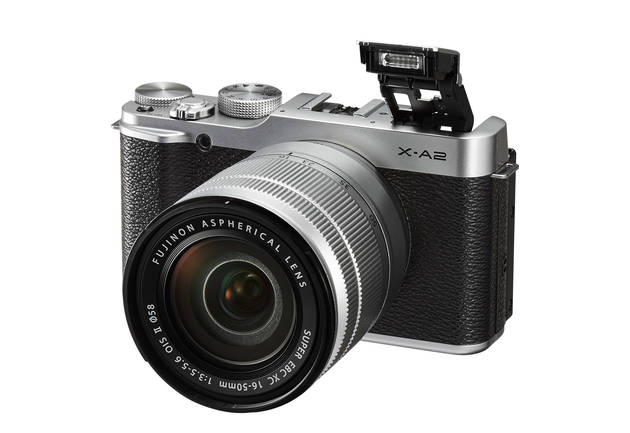Getting to know the camera
X-A2 / XF14mmF2.8 R Settings: ISO 200, F22, 1/27 s, 21.0 mm equiv.Download RAW
More recently, when one of my friends or acquaintances asked for my advice about which camera is better to get, I always said that a SLR camera is the best choice. But times are changing, and now the answer to this question is not as unambiguous as before.
Get the price Fujifilm X-A2
Mirrorless cameras are increasingly winning the hearts of amateur photographers around the world. One of the main culprits for this is the Fujifilm company, which created the iconic camera line, the X-series. Our today's test subject, Fujifilm X-A2, is the one to whom it belongs. This is the most affordable camera for exploring the X-mount system.
The novelty is a sequel to the X-A1 model and looks almost the same from the outside. All changes touched the "insides" of the camera. As for the appearance of the X series, this is a separate article of pride for Fujifilm. The heap of awards received by the Japanese company for the design of their cameras is additional evidence that they know their business. Hence the variety of colors of the case in which the X-A2 is presented.
In technical terms, the camera is a little more restrained. But despite the fact that we are dealing with the most affordable model in the lineup, this does not greatly affect its characteristics.
The 16.3-megapixel APS-C CMOS sensor is responsible for capturing the image. Those familiar with other Fujifilm mirrorless cameras have probably noticed something amiss. Indeed, the X-A2 uses the usual “Bayer” matrix, and not the company's proprietary development - the X-Trans sensor. Alas, getting everything right away is impossible, so I advise more demanding amateur photographers to take a closer look at the older models of the X-series. While Fujifilm X-A2 is optimal for relatively undemanding lovers.
The physical dimensions of the matrix are 23.6x15.6 mm with a crop factor of 1.5x. The maximum file resolution is 4896x3264. Due to the not very high pixel density, the X-A2 should get a slight advantage when shooting at high ISO. We will definitely check this assumption during the review. The range of values here is truly “adult” - 200-6400 units with the ability to expand to ISO 100, 12800 and 25600.
Image processing is carried out by the built-in EXR II processor, similar to that installed in the top-end Fujifilm X-T1 camera. This provides the X-A2 with decent speed. The camera turns on in 0.5 seconds, and its rate of fire is 5.6 frames per second. When shooting in JPEG at maximum speed, the burst size is limited to 30 frames. With RAW or RAW + JPEG, it is already 10 frames.
In poor lighting conditions, the built-in flash may help. It has a folding "jumping" design, thanks to which it can be sent even to the ceiling. This will allow for a softer and more uniform lighting when shooting indoors.
Another useful feature is the presence of a built-in Wi-Fi module. Unfortunately, remote shooting with it is not supported, but transferring photos to your gadget will work without problems. All you need is a phone with iOS or Android on board and a special application from Fujifilm. Also available is the transfer of GPS coordinates for subsequent recording in EXIF of your pictures.
By optimizing power consumption, the Fujifilm X-A2 can capture up to 410 frames per charge. For the mirrorless class, this is an excellent indicator. I also note that along with the battery, the baby's weight is only 350 grams. Together with small dimensions, this will allow you to take the camera with you everywhere, eliminating the possibility of missing interesting stories.


